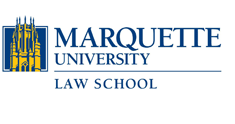Abstract
To take provocation at face value is to plead and prove it as a manslaughter offense, as it is defined in most criminal codes. To do this seems to be both unnecessary and impossible. The defendant has the best access to evidence of provocation and will benefit from the proof of this partial defense, so why should he not be required to prove it? The prosecution has no incentive to prove provocation manslaughter because the definition of this offense includes a murder. Why would the prosecution, having proved a murder, set out to prove a lesser crime than the crime for which it already has a conviction? However, this Article will demonstrate that normative theory obligates us to treat provocation manslaughter as an offense, and that it is possible to do this as a practical matter.
The argument is a conceptual argument in the normative theory of punishment. The best theoretical description of provocation manslaughter is as an offense, and not as a partial justification defense or as a partial excuse premised on a partial loss of responsible agency. Once we distinguish three things that are usually conflated—intentions, intentional actions, and intent elements—we can see that provocation manslaughter depends on proof of a particular intentional act of killing, and that this proof brings a particular set of the defendant’s intentions to the fore for purposes of determining his desert for punishment. This set of intentions is different from the set of intentions that proof of a killing with intent, murder, brings to the fore for purposes of determining desert. Regardless of any reference to an intent to kill in the definition of provocation manslaughter, this kind of manslaughter is logically and normatively different from, and exclusive of, murder—in just the same way that reckless manslaughter is. If reckless manslaughter is an offense, then provocation manslaughter is an offense as well—and should be proved as one—because there is no conceptual difference between the two kinds of manslaughter, relative to the other homicides.
This Article shows how we can treat provocation manslaughter as an offense as a practical matter. We should adopt a set of rules that provide discovery to the prosecution, that obligate it to make a prima facie case on pain of a mistrial and bar to reprosecution, and that reverse the ordinary order of jury deliberations so that provocation manslaughter is considered first and murder is considered second—or not at all, if the jury has convicted the defendant of provocation manslaughter. These rules will provide an incentive for the prosecution to prove provocation manslaughter and a disincentive to sandbagging that proof in an attempt to obtain a murder conviction instead. More importantly, the proposed rules enable us to live up to our rule of law ideals—including the principle of lenity as well as the requirement of proof beyond a reasonable doubt—in a way that treating provocation as a partial defense does not. If we take provocation at face value, then we can better preserve criminal law’s constitutional principles, theoretical consistency, and moral integrity.
Repository Citation
Kyron Huigens,
Provocation at Face Value,
95 Marq. L. Rev. 409
(2011).
Available at: https://scholarship.law.marquette.edu/mulr/vol95/iss2/3
